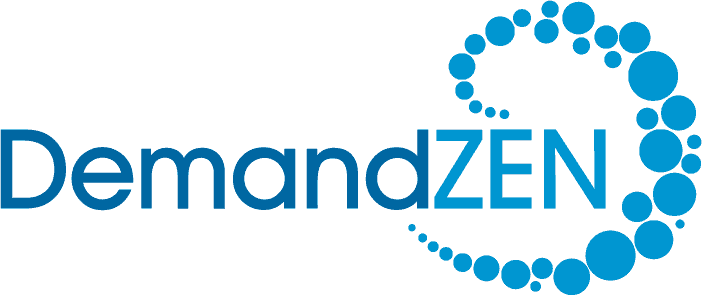SEO Best Practices for 2018

SEO Best Practices for 2018
Wondering what you need to be doing in 2018 to boost your organization’s searchability? Let’s start with the basics.
What is SEO? Search engine optimization is exactly what it sounds like: optimizing content so it appears in better positions within a search engine (think Google, Bing, Yahoo, etc). Ultimately, by adhering to SEO best practices for 2018, you’ll get your content in front of people who are actively searching for information.
If you’re looking for SEO best practices for 2018, you won’t find it by picking up a book in the how-to section of your local bookstore. You’ll find SEO basics, for sure, but be careful. Since search engines are constantly refining their algorithms, you’ll likely need to turn to the web for the most up-to-date SEO trends.
So how do SEO best practices for 2018 differ from last year? Where should you focus your digital marketing efforts?
Website Optimization

Before you can rank your content, your SEO strategy should focus on optimizing your website. You can have great content that would otherwise rank highly for your target keywords, but if your website doesn’t have these basic optimizations, search engines will bury you. Make sure you have the following:
- Fast site speed
- Quality user experience
- Mobile-friendly pages
- Secure site connection
- No 404 errors
User experience (UX) for SEO is becoming more important in 2018. A good user experience, according to Google, is having a quickly-loading, responsive, mobile-friendly website. The content should have high readability. When it comes to SEO, readability means non-technical writing and structural cues (think H2 tags and bullet points) as well as inclusion of images or video. The Flesch Reading Ease test is a great tool for SEO readability in WordPress.
Let’s break the optimal user experience down further.
Crafting a great user experience
 The optimal page loading time for Google must be under 3 seconds. Any longer and your site will be penalized on the SERP (Search Engine Results Page). Additionally, it’ll be increasingly necessary in 2018 to have a mobile-friendly website. This will both attract and keep visitors on your pages. At a bare minimum, you should build pages using a mobile-friendly, responsive template for both your website and email efforts. By 2018, eight out of ten email users will likely exclusively access their email account from a mobile device. Google has a great free mobile-friendly test tool that grades your website and offers suggestions for improvement.
The optimal page loading time for Google must be under 3 seconds. Any longer and your site will be penalized on the SERP (Search Engine Results Page). Additionally, it’ll be increasingly necessary in 2018 to have a mobile-friendly website. This will both attract and keep visitors on your pages. At a bare minimum, you should build pages using a mobile-friendly, responsive template for both your website and email efforts. By 2018, eight out of ten email users will likely exclusively access their email account from a mobile device. Google has a great free mobile-friendly test tool that grades your website and offers suggestions for improvement.
Don’t forget to give your meta descriptions attention, either. For those visitors searching on mobile devices, short title tags can be too small for thumbs to easily press. Meta descriptions that are between 150-160 characters give ample space for mobile users to click through to your site. And please – no keyword stuffing.
Secure your site, too. Search engines favor “https” over “http” – as do users. Hubspot reports that 82 percent of visitors abandon websites that aren’t secure. In October 2017, a Google Chrome update began flagging sites that didn’t have a basic site security feature called SSL. Since Chrome has nearly half of the market share for browsers, millions of internet users now see a “NOT SECURE” notice in the URL bar in ominous red lettering. Moz has a great tutorial (complete with GIFs) for making your site more secure as we enter 2018.
Content Best Practices in 2018 for SEO
 We can’t talk about SEO best practices for 2018 without commenting on content. It’s true – the basics of content marketing haven’t changed from 2017:
We can’t talk about SEO best practices for 2018 without commenting on content. It’s true – the basics of content marketing haven’t changed from 2017:
- Leveraging video content
- Updating old blog posts
- Producing high quality content
- Backlinking
- Optimizing your content for long-tail keywords
- Inclusive marketing
However, there are a few new SEO trends expected to dominate 2018. They are:
- Linkless mentions
- Topic clusters
- Longer blog posts
- Interactive content
Linkless Mentions
Let’s start with linkless mentions. Search engines are getting smarter, especially when it comes to link building. The majority of online word-of-mouth marketing is linkless. Because of this, search engines have worked to move away from links as a ranking signal. Linkless mentions, also known as linkless attribution, come in many different forms. Examples include mentioning a brand or business (without a link) in a news story, review, forum, blog comment, social network, or video transcript.
Keep in mind that spam mentions won’t do you any favors. Search engines likely use the same filters on linkless mentions as they do with links. So as you plan your SEO efforts for 2018, consider finding a monitoring tool that will find linkless mentions of your business across the internet. Check out Awario. Regardless of the tool, make sure to follow up on positive mentions, respond to negative ones, and build support from your customers or industry influencers.
Topic clusters
If 2017 taught us anything, it’s that your content has to be relevant for your website to be relevant. Topic clusters are becoming an SEO basic in 2018. What are topic clusters? Think of it as virtual siloing or website theming. It’s an internal linking strategy that shows search engines that your site has strong relevance and comprehensive content. Here’s a great in-depth piece on topic clusters.
Longer blog posts
To follow SEO best practices for blogging in 2018, create longer content. Hubspot reports that the new sweet spot for a blog’s length is between 2,250 – 2,500 words. Search engines favor longer posts and visitors will spend more time on your website. If you need suggestions for your blogs, try using SEMrush’s “SEO Content Template.”
Interactive content
Search algorithms reward sites with high levels of visitor engagement. Interactive content retains readers’ attention, rewards interaction, and increases time spent on a page. From an SEO perspective, interactive content is a no-brainer. There are many tools available for content marketers that simplify the interactive content creation process.
Optimizing for SERP (Search Engine Results Page)
We’ve covered how to improve your SEO for 2018 by optimizing your website and content. This section focuses more on Google’s algorithms and the SERP itself.
Artificial intelligence (AI) in search algorithms
As Google refines its algorithms for SERP ranking in 2018, artificial intelligence is expected to play a larger role. Google sorts its searches using RankBrain. RankBrain is a machine learning tool that measures how visitors interact with search engine results. When users click into a result, AI watches how long the person spends with the content. It then uses this information to rank the results. If a web page is fully optimized for a keyword with title tags, meta descriptions, images, and more — but provides horrible content — the bounce rate will be high as visitors quickly realize they won’t find what they need on your page. RankBrain notices this and adjusts the SERP ranking accordingly. Quality content will lead to high rankings.
Voice search and digital assistants
Voice searches are an integral focus for SEO. In fact, over 20 percent of all queries on mobile devices are voice searches. Digital assistants (like Alexa, Siri, Cortana, and the Google Assistant) offer conversational search experiences. Your marketing and SEO efforts for 2018 should reflect this. Since voice searches are typically in the form of a question, optimize your content for these digital assistants by having both the question and answer side-by-side on the page.
Here’s where AI plays another important role. Artificial intelligence learns about what a user’s intent is, and as it gathers information, search engines will be able to offer only the most relevant results. Create content that answers questions real people would ask. Write blog posts, compile eBooks, and build resources that cater to the 2018 searcher.
Rise of SERP features
A SERP feature is any result on a search results page that isn’t a traditional organic result. The primary goal for SERP features is to give the searcher the most relevant information in a quick, easy to digest form. It stands out, too, so your information will be more visible to searchers. Take advantage of SERP features:
- Knowledge panels
- Featured snippets
- Quick answer box snippet
- Rich snippets (ex. Review stars for product rating)
- Image results
- Structured data
- Paid results
Moz has a great in-depth article on these features and how to rank for them. Another great tool is Schema.Org.
SEO Steps to Take in 2018
Follow these SEO best practices for 2018 before the year is out to have a competitive advantage in the world of SEO. If you’re concerned about website optimization, increasing site visitors, and improving page rank, perform a technical SEO audit. This will set you up for SEO success in 2018.
If you’re looking to expand your marketing efforts, consider augmenting your existing marketing department with a digital marketing agency. DemandZEN acts as an extension of your team, so you reap the benefits of extra marketing professionals without the overhead and intensive employee onboarding. If you’re curious how we can help you (in 2018 and beyond), reach out to us!
You Might Also Enjoy These Posts
How Does Social Media Affect SEO?
SEO Techniques That Will Get You The Rankings You Deserve
Welcome To DemandZEN
DemandZEN specializes in Account-Based Demand Generation and solving the challenges around finding, engaging and converting target accounts into real opportunities for B2B Technology and Services companies.


